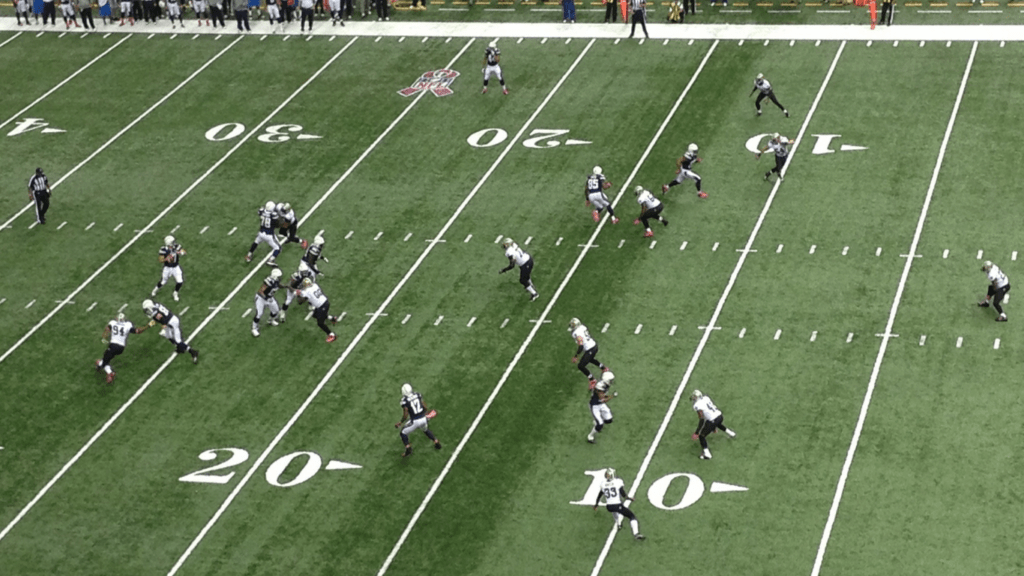As a football enthusiast, I’ve always been fascinated by the intricacies of offensive efficiency in the game. One metric that truly sheds light on a team’s performance is Expected Touchdowns (xTD). In this article, I delve into the world of xTD to uncover how it revolutionizes our understanding of scoring potential on the gridiron.
Understanding xTD goes beyond the traditional box score stats, offering a deeper insight into a team’s offensive capabilities. By exploring the nuances of this advanced metric, we can unravel the mysteries behind why some teams consistently outperform others in the quest for touchdowns.
Join me as we navigate through the realm of xTD and discover how it shapes the narrative of offensive prowess in football.
Understanding Expected Touchdowns (xTD) in Football
Exploring Expected Touchdowns (xTD) delves into the nuances of offensive efficiency in football. It goes beyond traditional metrics to provide a deeper insight into a team’s scoring potential. By analyzing xTD, we gain a clearer understanding of why certain teams stand out in their ability to score touchdowns.
This enhanced perspective is valuable for evaluating offensive performance in football.
Factors Affecting Offensive Efficiency
When considering offensive efficiency in football, various factors come into play that can significantly impact a team’s performance. Understanding these key elements is crucial for evaluating a team’s effectiveness on the field.
Player Performance Metrics
- Key Performance Metrics: Individual player performance metrics, including yards gained, completion percentage, and touchdowns scored, are crucial for evaluating offensive efficiency and understanding a player’s contribution to the team’s success.
-
Identifying Impactful Players: Analyzing these metrics allows for the identification of top-performing players and provides insights into their roles in driving the team towards scoring touchdowns.
Team Strategies
Team strategies play a vital role in determining offensive efficiency. From play calling to execution on the field, the strategies employed by a team can greatly influence their ability to score touchdowns.
Analyzing factors such as offensive formations, tempo, and situational play-calling can shed light on how successful teams strategically plan their offensive plays to maximize scoring opportunities. Understanding these strategies is key to deciphering why certain teams excel in offensive efficiency compared to others.
Calculating Expected Touchdowns (xTD)
Exploring the concept of Expected Touchdowns (xTD) sheds light on a football team’s offensive efficiency beyond traditional statistics. By delving into xTD, we uncover insights into why certain teams excel in scoring touchdowns.
Factors such as individual player performance metrics and team strategies play a pivotal role in understanding offensive effectiveness. In evaluating a player’s contribution to the team’s offensive output, metrics like yards gained, completion percentage, and touchdowns scored are essential.
These metrics offer a comprehensive view of how players impact the team’s ability to score. Additionally, team strategies such as play calling, offensive formations, and situational decision-making significantly influence a team’s scoring potential.
By calculating Expected Touchdowns (xTD), we can gain a deeper understanding of a team’s offensive efficiency. xTD allows us to quantify the expected number of touchdowns a team should score based on various factors. This metric provides valuable insights into the scoring potential of a team and helps us decipher the reasons behind their offensive effectiveness.
Analyzing the Impact of xTD on Offensive Performance
Exploring the Impact of xTD
Analyzing the Impact of xTD on Offensive Performance, I delve deeper into the effectiveness of a football team’s offensive strategies. By understanding the concept of Expected Touchdowns (xTD), I gain valuable insights into how teams excel in scoring touchdowns beyond traditional statistics.
Factors Affecting Offensive Efficiency
Further discussing Factors Affecting Offensive Efficiency, I highlight the crucial role of individual player metrics and team strategies in determining a team’s offensive output. Metrics such as yards gained, completion percentage, and touchdowns scored play a significant part in evaluating player contributions to offensive success.
Influence of Team Strategies
Delving into the Influence of Team Strategies, I examine how play calling, offensive formations, and situational decisions impact a team’s ability to score effectively. Understanding these strategic elements provides a comprehensive view of how a team’s game plan can lead to offensive success.
Calculation of xTD
Detailing the Calculation of xTD, I explain how this metric quantifies a team’s expected number of touchdowns based on various factors. This calculation unveils crucial insights into a team’s scoring potential, shedding light on the reasons behind their offensive prowess.






